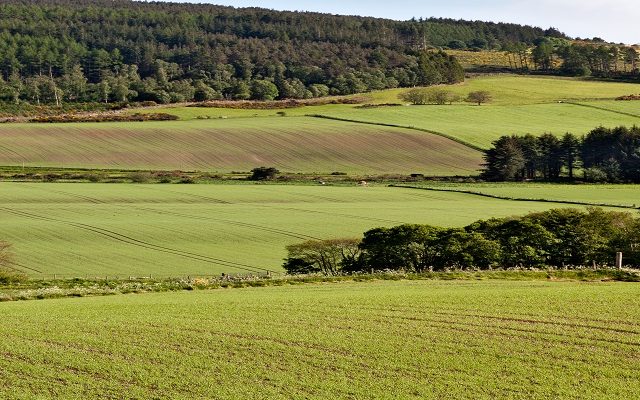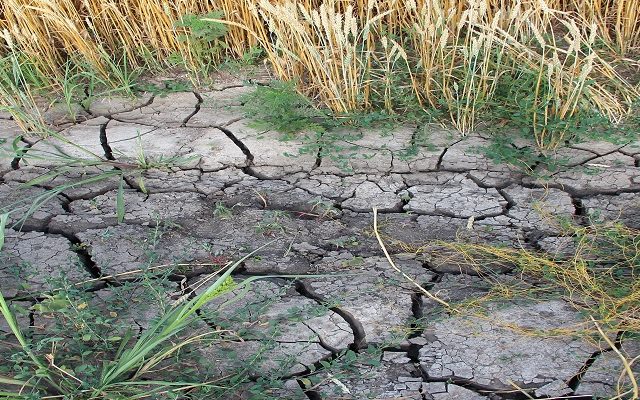8 key trends driving change in the rural sector in 2022
Land and property specialists Strutt & Parker has highlighted some of the key themes likely to drive change in the rural sector in 2022 and how farmers and landowners might best respond.
The rural sector is facing a period of dramatic change and Christmas and New Year is a good time to reflect on future trends and explore where there might be opportunities to generate new income streams.
While there are many challenges to be addressed, we believe there will also be huge potential for rural businesses. However, the options and competing opportunities will require careful navigation and it may require a step change in what businesses do and how they do it.
Key themes to consider for 2022 and beyond are:
1. Deeper BPS reductions
High commodity prices may help to mask the impact of the 5-25% reduction in Basic Payments (BPS) this winter, but as cuts get deeper from 2022-2027, it will create a financial shortfall that has to be addressed. Our impact assessment shows that over the past five years, BPS has accounted for about 60% of profits on average across all farm types, so the loss of it will leave a significant financial gap, particularly given the inflationary pressures currently facing farmers. Marginal improvements in productivity will only be part of the answer for many, so now is the time to get your house in order, examine future opportunities and make a plan as to how you can capture them.
Strutt & Parker’s farming department has two tools to help farmers explore and understand what BPS cuts will mean for their business. The first is a simple calculator which shows how Basic Payments are likely to reduce from 2020 to 2028. The second calculator shows the effect on net profits of changes in farm support, factoring in money which might be available through the Environmental Land Management (ELM) scheme, as well as profits from diversification and farming.
If you would like to run your figures through either of our calculators, email rural.enquiries@struttandparker.com. The use of the calculator can lead to valuable conversations about changes which can improve business resilience, including an increased focus on diversified income streams.
2. A complicated array of new schemes
Under its new domestic agricultural policy, Defra has been developing a whole tranche of new schemes and initiatives. During the transition period, some of these overlap with existing schemes, meaning that for now we have a vast array of new and existing schemes, each with different rules and eligibility criteria. Everything is complicated.
For example, Defra has recently published details of the payment rates for the four standards that will be available to farmers in England through the new Sustainable Farming Incentive (SFI) from Spring 2022. Its ambition is for 70% of farms and farmland in England to be part of the SFI by 2028. The big question is whether the payments are high enough to act as the necessary ‘incentive’ for farmers to sign up. Farmers should certainly not view the SFI as a replacement for BPS – whereas BPS is virtually all ‘profit’, most SFI options have associated costs. A possible alternative is the Countryside Stewardship Scheme which will remain open to new applicants until 2023.
As advisers, we can offer an objective appraisal of the options on offer, which takes into account your own goals, the farm’s economics and your financial and tax position, so you can make informed decisions. The options and competing opportunities will require careful navigation to ensure farmers achieve the best outcomes.
3. Lump sum exit scheme and delinking
Defra is shortly expected to publish the outcome of its consultation on a lump sum exit scheme, designed to free up land for new entrants and existing farmers wishing to expand. It will offer a one-off lump sum payment to those looking to leave farming in place of any further Basic Payments. While the sums of money are probably not large enough on their own to encourage people to leave if they are not already considering it, they may bring forward some decisions and start some new conversations between landowners and tenants.
Defra has also proposed that any remaining BPS payments are ‘delinked’ from the land from 2024 which will have implications for business structures and land occupation arrangements.
4. New focus on environmental protection
The Environment Act, which the government has introduced to enhance the natural world for future generations, has now passed into UK law. There is still lots of work to be done in fleshing out the Act through the introduction of secondary legislation, but it will require Defra to set long-term legally binding targets on air quality, biodiversity, water, resource efficiency, and waste reduction, which may present a regulatory and cost challenge for some rural businesses.
Farmers in England are already facing the tighter implementation of the Farming Rules for Water in a bid to prevent water pollution. This means they are facing significant changes to the way they store and spread manure, slurry, AD digestate or sewage sludge. If new equipment is needed, it could be part-funded under the Farming Equipment and Technology Fund, which is open now.
5. Carbon management and trading
Carbon trading has become a hot topic in recent months, now it is possible to trade carbon credits generated from woodland, peatland and soil. This is an exciting development in that it offers the potential to generate new income streams – one which is already having a significant impact in the forestry sector.
However, it is crucial that before landowners sell their carbon they understand how the markets work and the long-term implications for their business. A vital first step is to work out how much carbon they are emitting as a business and whether there is any surplus that can be sold to third parties without detrimentally affecting their position from a financial, environmental and reputational point of view.
6. Keeping property lettable
There has been a steady flow of new regulations affecting anyone with a let residential portfolio over the past few years, as part of the government’s commitment to raise standards for tenants. This is at a time when property costs are going through significant inflation, so the cost of maintaining property assets is increasing anyway.
One of the most challenging areas from a rural perspective is the need to raise energy standards within properties, given so many homes in rural areas are of an older build, listed or in a conservation area. However, tougher standards seem almost inevitable given the government has already consulted on raising the minimum Energy Performance Certificate (EPC) rating to a C for new residential tenancies from 2025 and is currently consulting on whether to end the installation of new fossil fuel heating systems in English homes which are off the gas grid from 2026. The costs of ensuring that houses and cottages remain lettable looks set to continue to rise and getting the right advice will be essential.
7. Electrification of the economy
A significant increase in the production of electricity without the use of fossil fuels is required if the UK is to decarbonise its energy system and reach its net zero target by 2050. Growth in the renewable energy sector is therefore likely to accelerate in 2022 and beyond, presenting opportunities for landowners, with solar developers keen to secure farmland sites and a need for more battery storage sites.
More generally, high energy costs look set to continue to be a challenge, so any measures which reduce energy consumption, by improving efficiency, are likely to be worthwhile and it may also be worth exploring if there are better options in terms of energy supply contracts.
8. ESG investing
The rural sector is being affected in a number of ways by the focus on Environmental, Social Governance (ESG) considerations in the corporate world. The emphasis on ESG and Corporate Social Responsibility (CSR) has become noticeably more pronounced in the business community in the past few years, as companies seek to offset their carbon emissions and boost their green credentials. This is driving interest in tree planting, rewilding and the delivery of other ecosystem services.
This presents an exciting opportunity to generate new income streams for those landowners with the sort of land likely to attract investment to enhance the natural capital. However, it is not without its challenges, with farmers’ representatives increasingly vocal about the loss of productive farmland and warning about the impact this might have on food security and local communities.
For landowners wanting to explore the varied opportunities in this area, a good starting point is to produce a natural capital account which helps a business to understand what natural capital assets they have and to assess their quality. Strutt & Parker is collaborating with market-leading environmental economists eftec to produce natural capital accounts for farms and estates.






